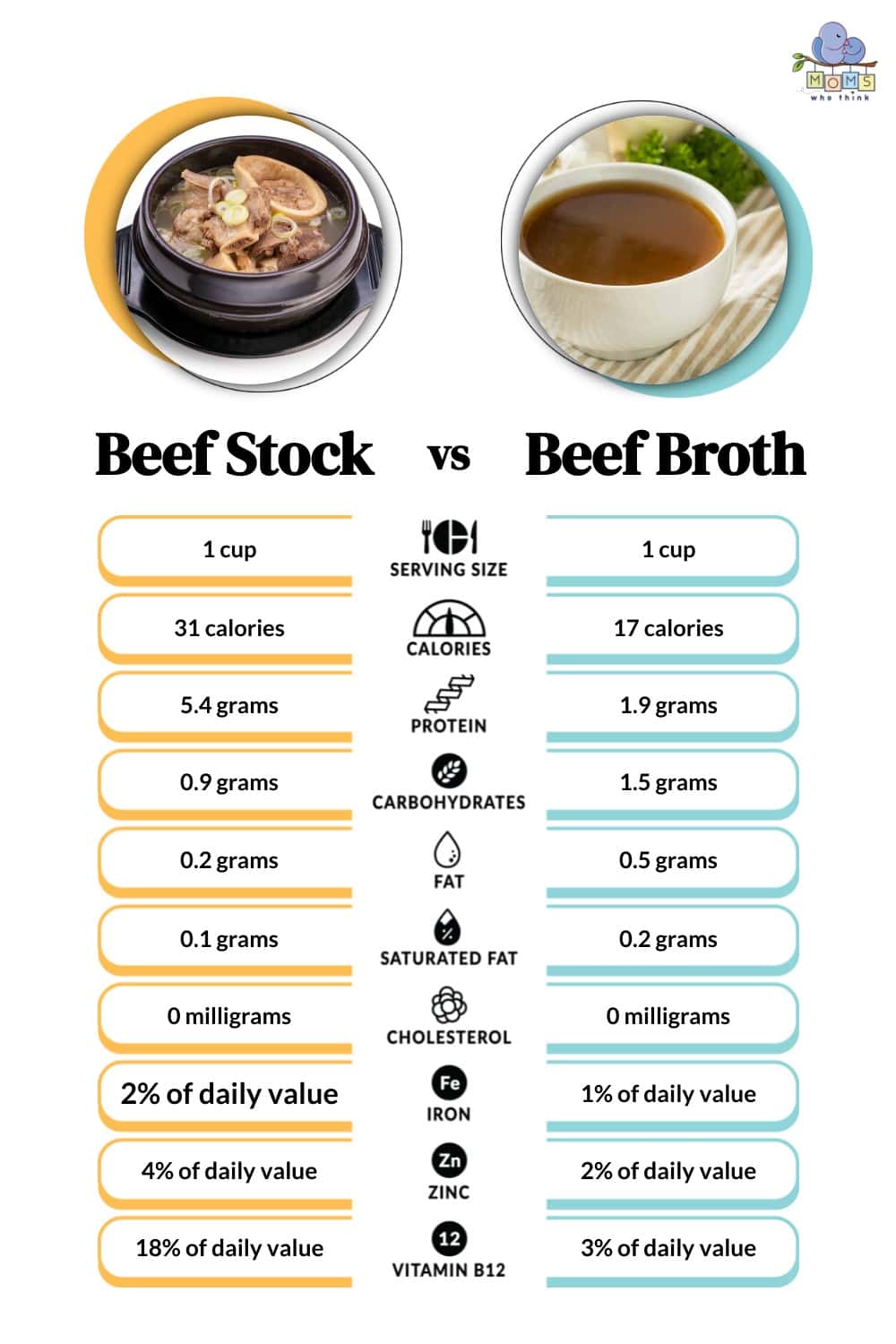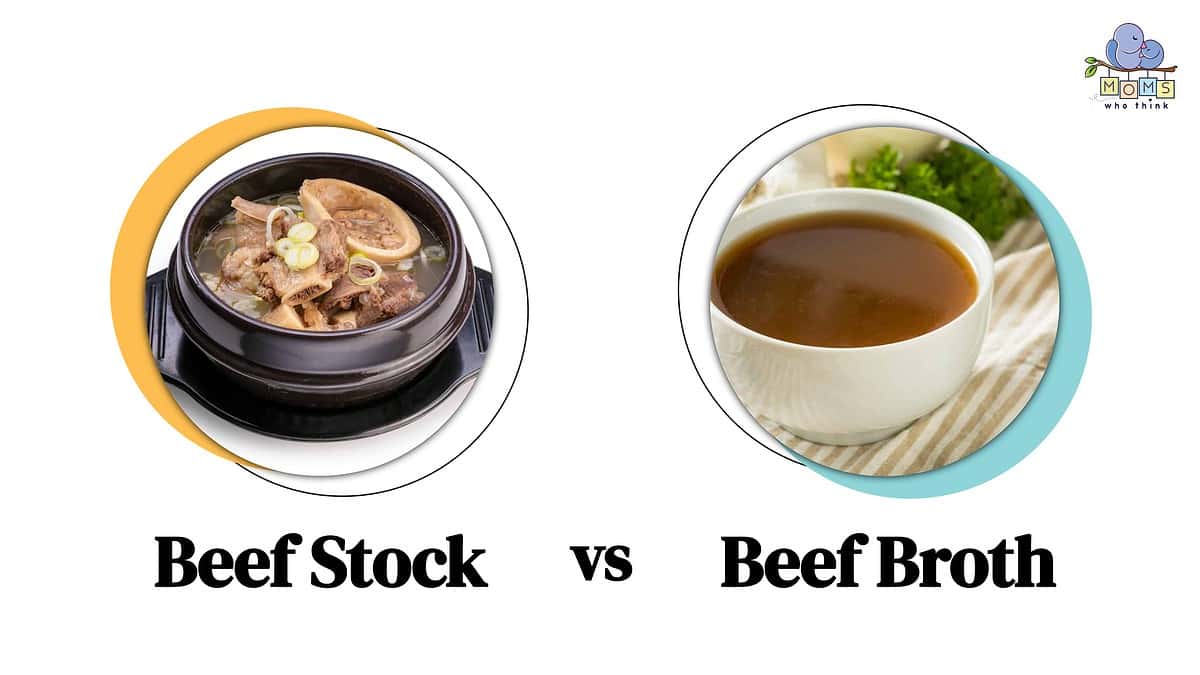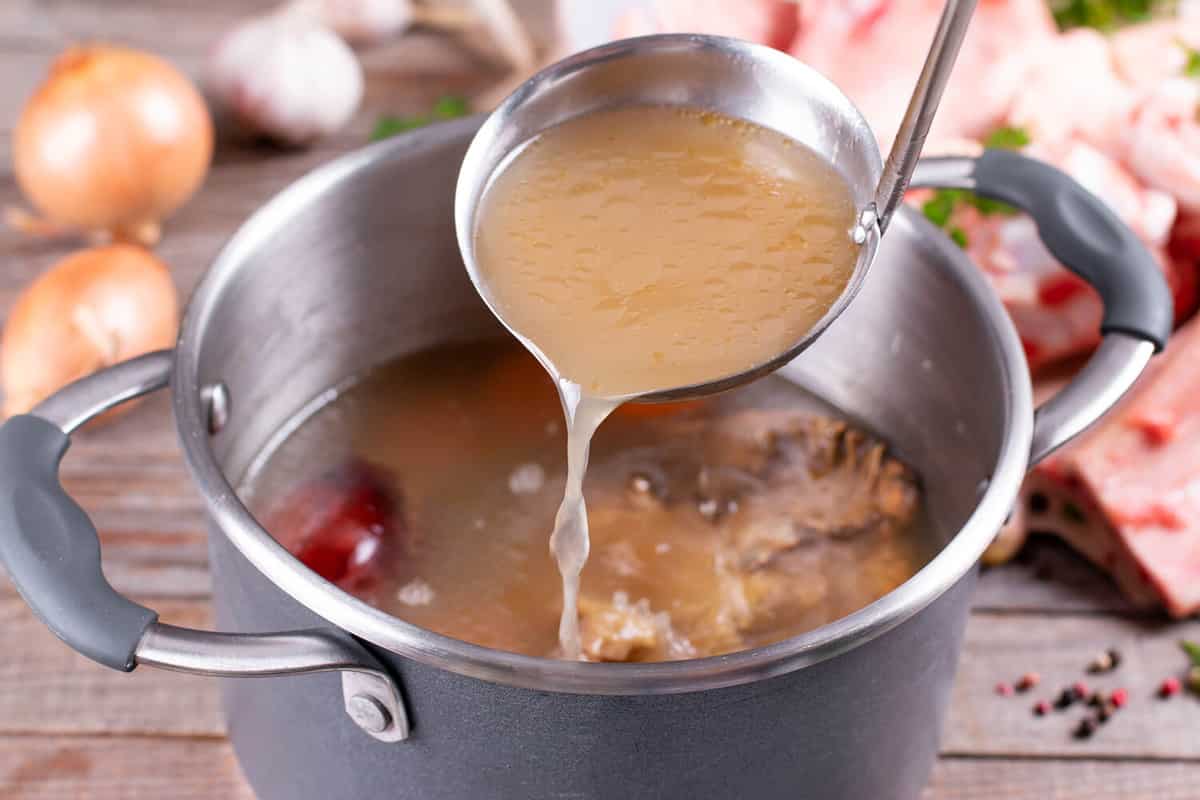Stocks and broths are the perfect additions for making many tasty and satisfying dishes. The most significant decision is whether to use beef stock or beef broth. Although they have many similarities, one main difference is that broth is made mainly from meat or vegetables; stock, however, is made from bones. In this article, we'll explore the world of beef stock and broth, examining their taste, health benefits, and more.
Beef Stock vs. Beef Broth: History and Uses
Let's dive into the specifics of both. Beef stock is made by simmering beef bones, vegetables, and seasonings over a long period to extract the gelatin and flavors. On the other hand, beef broth is created using meat in place of bones and is typically simmered for a shorter duration. Both have been used in cooking for centuries, with ancient civilizations having records of using beef broth. Nowadays, both are widely used in dishes such as soups, stews, sauces, and gravies. So, when you feel chilly or want to whip up a sauce or soup dish, consider incorporating beef stock or broth.
Beef Stock vs. Beef Broth: Taste Differences
Next, we will talk about the difference in taste. Beef stock is usually cooked for a more extended time, giving it a more complex flavor. During the simmering process, the bones release gelatin, adding depth to the taste and making the stock thicker. This consistency makes it an excellent choice for sauces and gravies.
On the other hand, beef broth is cooked for a shorter period, resulting in a lighter flavor and taste. It also has a thinner consistency since it is made by simmering meat. Compared to stock, broth is less concentrated and is commonly used as a base for soups and stews.
- The must-have convenient reference guide for every home cook!
- Includes more than 8,000 substitutions for ingredients, cookware, and techniques.
- Save time and money on by avoiding trips to grab that "missing" ingredient you don't really need.
So, if you want to enhance the depth and richness of your stews or soups, opt for beef stock. However, go with beef broth if you prefer a lighter flavor and taste for soups or sauces. Regardless of your choice, your taste buds will surely be satisfied!
Beef Stock vs. Beef Broth: Health Benefits
Now, let's discuss the health benefits of both options. They both come with different nutritional perks.
Beef Stock
- High in collagen- The bones used to make stock release collagen, which has been shown to improve skin elasticity, joint health, and gut health.
- High in minerals- Bones are a source of essential minerals like calcium, magnesium, and phosphorus that contribute to strong bones, teeth, and proper muscle function.
- Lower in sodium- Homemade beef stock typically has less sodium than store-bought options, making it a better choice for those monitoring their salt intake.
- High in protein- This makes it more filling and promotes satiety while potentially aiding weight loss.
Beef Broth
- Lower in calories- Since broth is created from simmering meat, it generally contains fewer calories.
- Easily digested- Due to its thinner consistency, it may be gentler on the digestive system. It is more suitable for individuals with sensitive dietary needs.
Both beef stock and beef broth have advantages, and the healthier choice depends on your preferences and needs.

Beef Stock vs. Beef Broth: Homemade or Store-Bought
We've discussed the taste and health benefits of beef stock and broth. Next, let's address whether yours should be store-bought or homemade. While store-bought versions offer convenience, making your own gives you control over the ingredients and cooking time. The ability to choose the ingredients becomes especially significant for individuals with specific dietary requirements or those aiming to enhance their health by incorporating nutritious herbs or spices. Moreover, homemade options allow you to customize them according to your taste!
Beef Stock vs. Beef Broth: How To Make Them
If you're up for it, you can easily make your version of either broth or stock with just a few simple ingredients and some patience. Homemade creations allow you to personalize your recipes according to your preferences while ensuring that you're maximizing their nutritional value. Plus, there's something incredibly satisfying about creating something from scratch!
Buying your beef broth and stock at the store is the most convenient. However, if you want to try making yours from scratch, below are recipes for both.
Recipe for Beef Bone Broth
Ingredients:
- 3-4 pounds of beef bones
- 2 chopped carrots
- 2 chopped celery stalks
- 1 chopped onion
- 2 tbsp apple cider vinegar
- Salt and pepper (to taste)
- Filtered water
Instructions:
- Preheat the oven to 400°F and roast the bones for 20 to 30 minutes.
- In a pot, sauté the vegetables until lightly browned.
- Add the apple cider vinegar, bones, and enough water to cover them.
- Simmer for 24-48 hours once the water starts boiling.
- Salt and pepper to your taste preferences.
- Once the broth has cooled, strain the vegetables and bones.
Recipe for Making Slow-Cooker Beef Stock
- The must-have convenient reference guide for every home cook!
- Includes more than 8,000 substitutions for ingredients, cookware, and techniques.
- Save time and money on by avoiding trips to grab that "missing" ingredient you don't really need.
Ingredients:
- 2 pounds of beef bones
- 1 onion peeled and cut in half
- 1 garlic bulb cut in half
- 2 carrots roughly chopped
- 2 celery stalks roughly chopped
- 1 tablespoon of tomato paste
- 1 bay leaf
- 10 peppercorns
- 4 cups of water
Instructions:
- Preheat the oven to 400°F (200°C). Roast the beef bones in the oven for 30 minutes.
- In a slow cooker, combine all the ingredients. Ensure they are fully covered with water.
- Cook on low heat for around 8 to 10 hours.
- Remove the bones and vegetables from the broth.
- Strain the broth through a fine mesh sieve to remove solids.
This recipe is excellent for using up any leftover bones and vegetables you have on hand. You can enjoy it as is or use it as a base for soups, stews, and gravies.

Beef Stock vs. Beef Broth: Storage Tips
Regardless of your preference between beef stock and beef broth, how you store them is essential to preserve their flavor. One helpful storage tip is to freeze your stock or broth in ice cube trays to effortlessly add a cube or two whenever you need it in your dishes. You can also use freezer bags or Tupperware containers. Another suggestion is to use mason jars for long-term storage in the fridge or freezer. By following these tips, you can extend the shelf life of your beef stock or broth without compromising the taste. These options allow you to confidently prepare your soups and stews, knowing you have storage options for leftovers.
Beef Stock vs. Beef Broth: Recipe Using Beef Stock
Now that we have explored how to make beef broth and stock from scratch let's explore some recipes that list them as ingredients. Here are two delicious recipes that use beef stock and broth.
Beef and Mushroom Risotto with Homemade Beef Stock
Ingredients:
- 1 cup of Arborio rice
- 2 tablespoons of olive oil
- 1 chopped onion
- 2 minced garlic cloves
- 8 ounces of sliced mushrooms
- 4 cups of beef stock
- 1/2 cup of dry white wine
- 1/2 cup of grated parmesan cheese
- Salt and pepper to taste
Instructions:
- In a large skillet, sauté the chopped onion and minced garlic in oil until they become soft.
- Add the sliced mushrooms to the skillet. Cook them until they release their liquid.
- Add the Arborio rice to the skillet. Stir well to ensure it is coated evenly with the oil.
- Slowly pour one ladle of beef stock into the skillet containing the rice. Stir frequently until all the liquid is absorbed.
- Repeat this process by adding ladles of beef stock one at a time, ensuring that each scoop is absorbed before adding more. Halfway through, add the white wine.
- Remove the rice from heat once it has reached a tender and creamy consistency. Gently stir in the grated parmesan cheese.
- Season with salt and pepper according to your taste preferences.
This recipe offers a way to incorporate homemade beef stock into a dish other than traditional soup. Adding mushrooms provides a savory taste, while the risotto adds richness and satisfaction.

©Ahanov Michael/Shutterstock.com
Beef Stock vs. Beef Broth: Recipe Using Beef Broth
Beef Stew with Red Wine and Homemade Beef Broth
Ingredients:
- 2 pounds of cubed beef
- 2 tablespoons of olive oil
- 1 chopped onion
- 2 minced garlic cloves
- 4 sliced carrots
- 4 sliced celery ribs
- 1 cup of wine
- 2 tablespoons of tomato paste
- 4 cups of flavorful homemade beef broth
- 1 sprig of thyme
- Salt and pepper to taste
Instructions:
- In a large pot, heat the olive oil and brown the beef on all sides.
- Remove the beef from the pot, then sauté the onion and garlic until they become soft.
- Add the carrots and celery to the pot, cooking them for 2 minutes.
- Pour the wine to deglaze the pan, scraping up any bits from the bottom.
- Stir in the tomato paste, homemade beef broth, thyme sprig, and salt and pepper.
- Bring everything to a boil, then reduce heat to a simmer. Let it gently cook for 1 to 2 hours until the beef becomes beautifully tender.
- Season with salt and pepper.
This recipe is about comfort food at its best! Adding homemade beef broth gives this stew a depth of flavor that will warm your soul.
In conclusion, deciding between beef stock or beef broth ultimately boils down to preference and cooking uses. Both can add flavor and provide hearty nutrition when used correctly. So don't be afraid to get creative in the kitchen and experiment with them! Choose beef stock to enhance the taste of soups, stews, or gravies with a beef flavor. On the other hand, if you prefer a mild, light taste, go for beef broth instead. Both options are satisfying kitchen staples. Whichever one you choose, it's a win-win.
Up Next:
- Chicken Broth vs. Beef Broth: From Flavor To Health Benefits, What's The Difference?
- Broth vs Soup: 4 Key Differences and When to Use Each
- Bone Broth vs. Chicken Broth: 3 Key Differences & When to Use Each
- Great Beef Recipes Using a Crock Pot
The image featured at the top of this post is ©New Africa/Shutterstock.com.
- The must-have convenient reference guide for every home cook!
- Includes more than 8,000 substitutions for ingredients, cookware, and techniques.
- Save time and money on by avoiding trips to grab that "missing" ingredient you don't really need.

